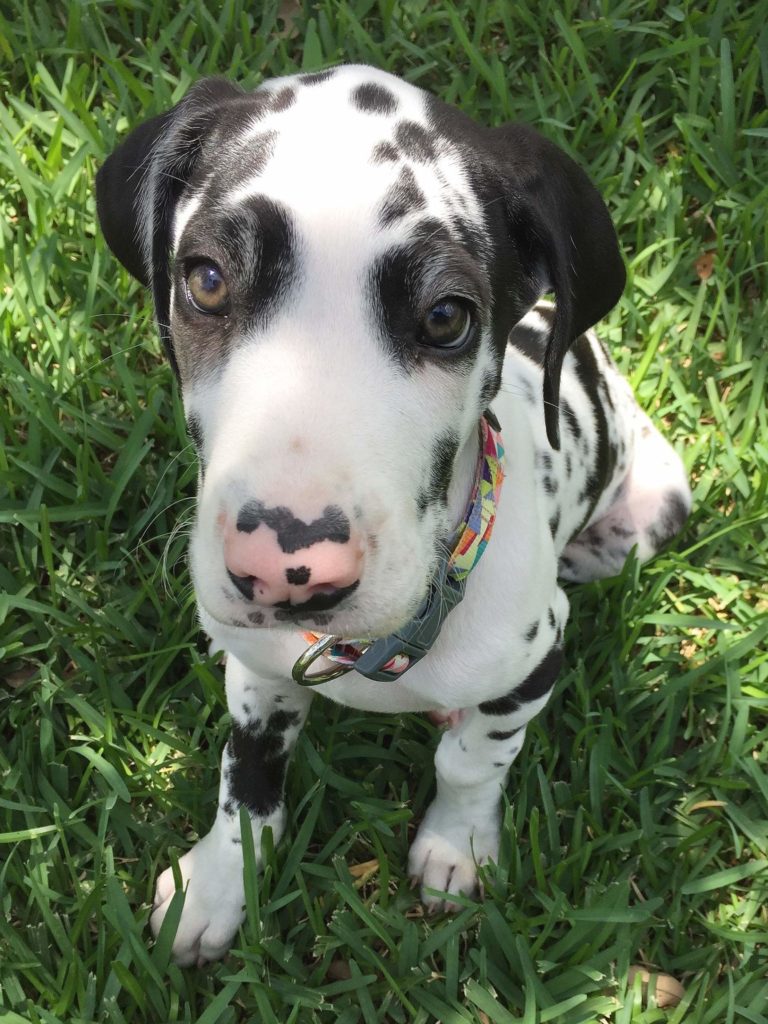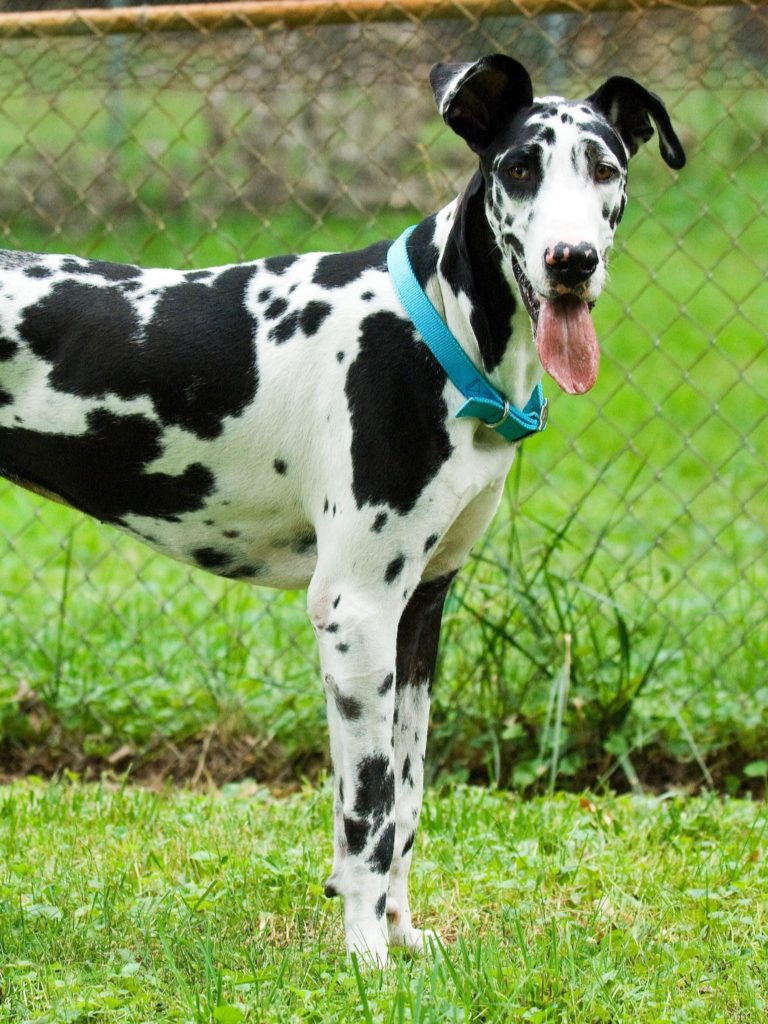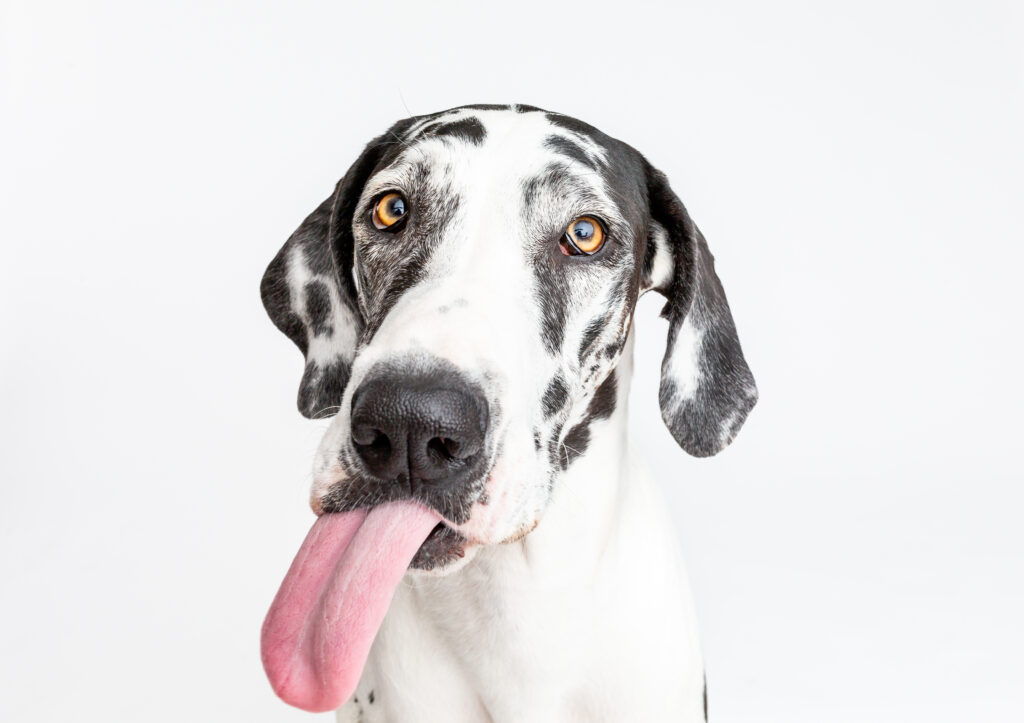Great Danes are incredible dogs, and they are not for everybody. Is your Great Dane well-bred?
There is a stark difference between dogs that are well bred (ethically bred) and dogs that were bred for profit. If a Great Dane is well bred, they are less likely to suffer from common disorders such as orthopedic problems, heart disease, bad temperaments, and even bloat.
Genetics play a role in everything from how a dog is built to how they interact with the world.
This article is not to say that ‘poorly bred’ Great Danes are bad and ‘well bred’ Great Danes are good. It’s simply meant to be an educational comparison.
The fact of the matter is that we have a serious problem in the world of Danes. For every breeder focused on health, structure, and temperament, there are tons of Great Dane breeders who are pairing dogs for no other reason other than fun and profit.

Well-Bred Great Danes Come From Dedicated Breeders
No matter what a Great Dane ends up looking like in the end, one of the key elements of being well-bred is that a dog comes from an ethical, dedicated breeder.
Here are some basics that a breeder should meet to qualify as ‘ethical’.
Lifetime support of every puppy they ever bred; this includes being willing to take dogs back into their home at any time, for any reason, and never dumping a dog on a rescue or shelter.
- Breeding for health, temperament, and the written breed standard
- Knowledgeable about sound Great Dane structure & movement
- Willing to seek out a 3rd party opinion about the dogs they are breeding, including working with a well-respected mentor, attending AKC dog shows, taking conformation handling and obedience training classes, or by collaborating with the local Great Dane breeding club
Full health testing of both parents, no exceptions. These tests include OFA Hips, heart, eyes, and thyroid. The results of these tests must be available for you to view at www.ofa.org
- Exceptionally picky when choosing homes for the dogs they breed
- Keeps puppies until 8 or 10 weeks of age
- Never breeds dogs under the age of 2, especially if they aren’t fully OFA health tested
An ethical breeder will never breed a dog that is aggressive, anxious, fearful, or that has bloat, heart disease, blood clotting disorders, or other known genetic health problems in the pedigree.

Well-Bred vs. Not Well-Bred Great Danes
Coming from a good pedigree and an exceptional breeder who cares about the pedigree is a solid step in the right direction.
Unfortunately, some breeders are so flippant about their breeding practices that the puppies they produce don’t look like Great Danes at all.
If you’ve googled this and are wondering if your Great Dane is well-bred or not, we’re going to dig into this with some photos!
Keep in mind that even in well-bred litters, only a few puppies will be ‘show quality’ (stellar examples of the breed). All puppies are pets, whether they are show-quality or not.
Puppies who aren’t right for the show ring will still be well-bred, however! Very few puppies are exactly perfect. Some, however, are much further off of the target than others.
It’s impossible to judge how well bred a puppy is just by looking at an image. Rather than focusing on what ‘well-bred’ looks like, let’s take a look at the opposite. What do dogs who are not well-bred look like?
The dogs in this gallery below are cute, but do not meet the written standard for Great Danes:

















Great Dane Faults
A fault is a trait that a dog has which goes against the recommendations outlined in the written standard.
Here is a list of faults seen in the dogs above. Again, this is not a beauty contest! It’s simply about making sure that Great Danes are built correctly so they can live long, healthy lives and look like…well…Great Danes!
How many faults can you spot?
- Flat feet
- Long nails
- Ears that come from the top of the head or that stick out (cute, but makes them look mixed breed)
- Ears that are long and droopy (cute! But makes them look like hounds)
- Extremely droopy jowls
- Droopy eyes with redness and haw showing
- Steep croup
- Narrow hips
- Roached back
- Apple shaped/dome head
- Lack of overall substance
- Heavy and stocky
- Cathedral chest or flat chest
- Abused & neglected
Unfortunately, many of the dogs in the gallery above will be mistaken for other breeds if met on the street. They may be loved family pets, but they are not well-bred.
Many people will consider the differences in the dogs above to be related to “Euro” vs. “American” breedings, however those terms are nothing more than marketing from breeders who want to sell puppies. Read more about “EURO vs. American” here.

What Does a Well-Bred Great Dane Look Like?
A well-bred Great Dane who comes from an exceptional breeder will be a solid, muscular dog that moves with grace and long forward strides. They will not be stocky, nor will they appear boney and small.
They have a large head that is chiseled and full of regal expression, whether the ears are cropped or not.
Their front and rear limbs will be built correctly, ensuring that they can comfortably hold their own weight up for years to come. They will have nice tight feet, short nails, and a glossy coat.
The chest should be broad and muscular, not flat or weak.
When they move and stand, they are comfortable keeping their head and neck up (not drooping down, which is a sign of discomfort), and they are not heavy or lumbering.
Well-bred Great Danes are friendly and courageous.
They should never be fearful, timid, or aggressive.
You can read the original Great Dane standard (in the U.S., which is nearly identical to the Canadian and European version) HERE.
When a Great Dane is built correctly from the ground up, they are less likely to suffer from painful orthopedic problems that cause them a lifetime of issues with movement.
Notice in the overlay below that the Great Dane in the image:
- Has an oversized, mastiff-like blocky head
- Droopy jowls
- He is unable to hold his head up correctly
- His hips are higher than his shoulders
- The top line is sloping up towards the hips, not gracefully down to them
- He has an exceptionally steep croup with his tail placed very low
- His rear legs lack angulation, as do the front
- While the front angulation appears to match the overlay, it’s only because the dog is standing incorrectly

Structural Faults in Great Danes
Structural problems are arguably the most important reason to choose ethical breeders.
Dogs carry roughly 60% of their weight on the front limbs; for an average 140 lb male, that’s 84 lbs of weight on the chest, shoulders, and front paws!
It is unfair, shall I say borderline abusive for Great Dane breeders to continue breeding dogs who have significant faults in the way that they are built. Yet, some of the most popular breeders, those who are friendly and have nice websites, are to blame.
Take the dog below as an example. This chocolate harlequin Great Dane is being bred by a local, very popular breeder. I believe that as of this writing, she is on her 2nd breeding.
Notice that she has absolutely no chest and no angles; her front arms are so far forward on her ribcage that she has a ‘cathedral’.
This weight on her front assembly is affecting her front paws, which are flat from struggling to hold herself up. Her rear legs might as well be made of wood; they are stick straight. As a whole this poor dog lacks substance and her rear feet are some of the worst I’ve ever seen.
She is an AKC registered Great Dane.

AKC Papers are Meaningless
Here is a fun fact for you.
A dog can have AKC papers, or be from an “AKC Registered” breeder, and still be poorly bred.
Putting two dogs with an AKC pedigree together is not enough to ensure the health and longevity of this breed that we love.
If you want to get involved, help us spread the word! The breeder registry at www.gdca.org is a great place to dig through exceptional Great Dane breeders.
Here is an example of an incredible stud who has passed full OFA screenings and received multiple titles because of how well he adheres to the breed standard: https://vandelftdanes.wixsite.com/mysite/quill
For more photos of well-bred Great Danes, here are some links to a few favorites:
- Find ethical breeders on social media and like, comment, and follow them
- Learn how to spot the difference between an ethical breeder and a ‘nice’ breeder with unethical practices
- Attend dog shows, meet breeders, and involve yourself in the preservation side of Great Dane breeding. It’s fun and shows are usually free to attend and watch as a spectator!
- For your next Great Dane, choose adoption or get on the list for well-bred dog
Leave a Reply